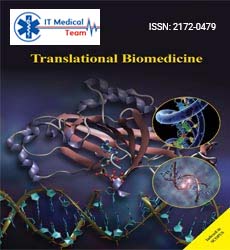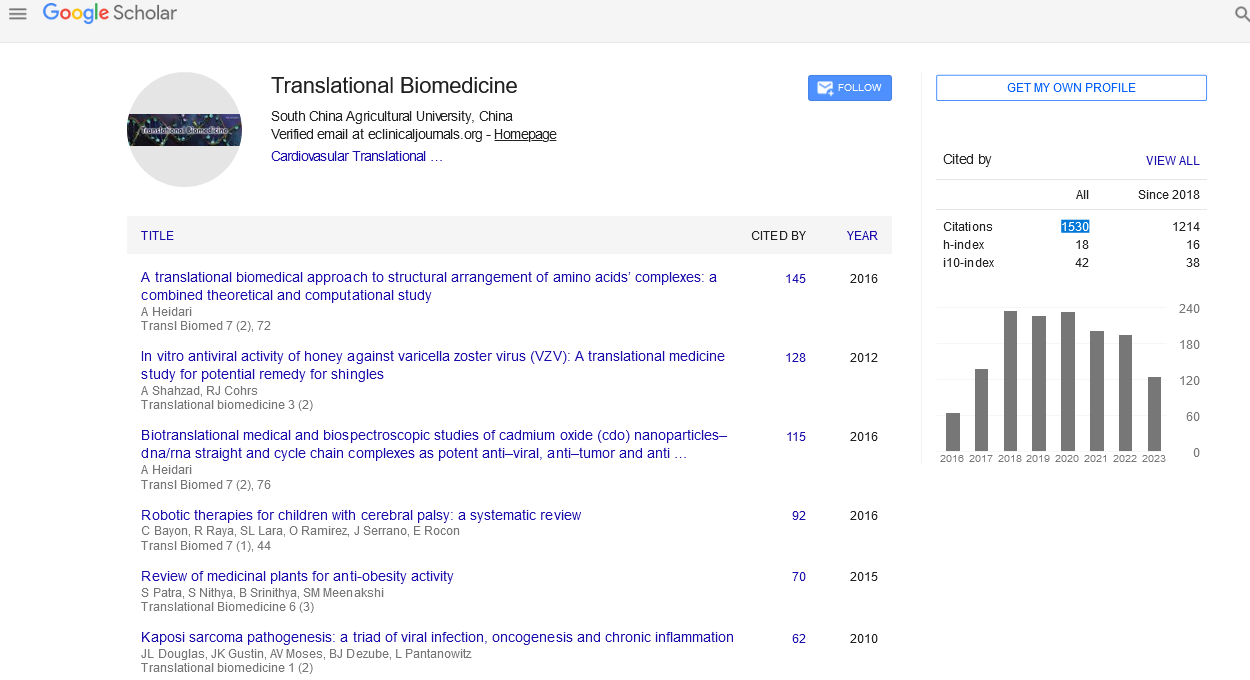Perspective - (2024) Volume 15, Issue 4
Phage Genomes with Multiple Genetic Codes: A Fascinating Frontier in Molecular Biology
Rodney Adam*
Department of Genomics, Leemu University, Embu, Kenya
*Correspondence:
Rodney Adam, Department of Genomics, Leemu University, Embu,
Kenya,
Email:
Received: 02-Jul-2024, Manuscript No. IPTB-24-14947;
Editor assigned: 05-Jul-2024, Pre QC No. IPTB-24-14947 (PQ);
Reviewed: 19-Jul-2024, QC No. IPTB-24-14947;
Revised: 26-Jul-2024, Manuscript No. IPTB-24-14947 (R);
Published:
23-Aug-2024
Introduction
Phages or bacteriophages, are viruses that infect bacteria.
They are the most abundant biological entities on earth, with an
estimated 10^31 phage particles in the biosphere. Phages play a
crucial role in regulating bacterial populations, driving bacterial
evolution and influencing global biogeochemical cycles. In recent
years, advances in sequencing technologies and bioinformatics
have revealed fascinating complexities in phage genomes,
including the presence of multiple genetic codes within a single
genome. This phenomenon challenges our traditional
understanding of genetic coding and has significant implications
for molecular biology, virology and evolutionary biology.
Description
The genetic code: A brief overview
The genetic code is the set of rules by which the information
encoded within genetic material (DNA or RNA sequences) is
translated into proteins by living cells. The canonical genetic
code, which is nearly universal among organisms, consists of 64
codons (triplets of nucleotides) that encode 20 amino acids and
three stop signals. This code is remarkably conserved across all
domains of life, highlighting its evolutionary stability and
efficiency. However, deviations from the canonical genetic code,
known as genetic code variants, have been observed in various
organisms, including some phages.
Phage genomes and genetic code variants
Phages exhibit an astonishing diversity in their genetic
composition and organization. Some phages have large genomes
with complex regulatory networks, while others have
minimalistic genomes that rely heavily on their bacterial hosts.
The discovery of phage genomes with multiple genetic codes
adds another layer of complexity to our understanding of phage
biology.
One of the most intriguing findings in recent phage research is
the identification of phages that use alternative genetic codes.
In these phages, certain codons are reassigned to encode
different amino acids than they do in the canonical code.
This reassignment can occur at various positions within the
genetic code and can involve multiple codons.
The presence of alternative genetic codes within phage
genomes suggests that these viruses have evolved unique
mechanisms to adapt to their hosts and environments.
Mechanisms of genetic code variation in phages
Several mechanisms have been proposed to explain how
phages can encode and utilize multiple genetic codes within
their genomes. These mechanisms include:
Codon reassignment: In some phages, specific codons are
reassigned to encode different amino acids. This reassignment
can occur through mutations in the tRNA genes or changes in
the tRNA synthetases, which alter the codon recognition and
amino acid attachment processes.
Programmed ribosomal frameshifting: Some phages use
programmed ribosomal frameshifting to shift the reading frame
of the ribosome during translation. This allows the ribosome to
read the same mRNA sequence in different frames, effectively
creating different proteins from the same genetic sequence.
Frameshifting can result in the incorporation of different amino
acids at specific positions, leading to variations in the genetic
code.
Translational bypassing: Translational bypassing is a process
where the ribosome skips over a segment of mRNA without
translating it, resuming translation downstream. This can result
in the production of proteins with different sequences and
functions from the same mRNA, potentially involving different
genetic codes.
Dual-coding genes: In some cases, phage genomes contain
dual-coding genes, where a single DNA sequence encodes two
different proteins in different reading frames. This can lead to
the use of alternative genetic codes for the different reading
frames, allowing the phage to maximize its genetic information.
Evolutionary implications of multiple genetic codes
The presence of multiple genetic codes within phage
genomes has significant implications for our understanding of
evolutionary processes. These phages demonstrate that genetic
code variations can arise and be maintained in viral populations,
providing a unique perspective on the evolution of the genetic
code.
Adaptive flexibility: Phages with multiple genetic codes
exhibit adaptive flexibility, allowing them to thrive in diverse
environments and exploit different bacterial hosts. This
flexibility may confer a selective advantage, enabling phages to
rapidly adapt to changing conditions and outcompete other
viruses.
Horizontal gene transfer: Phages are known to facilitate
horizontal gene transfer between bacteria, contributing to the
spread of genetic information and the evolution of bacterial
populations. Phages with multiple genetic codes may introduce
novel genetic elements into bacterial genomes, promoting
genetic diversity and innovation.
Evolution of the genetic code: The discovery of phages with
multiple genetic codes challenges the traditional view of the
genetic code as a static and universal entity. It suggests that the
genetic code can evolve and diversify in response to
selectivepressures, providing insights into the early evolution of
life and the origins of the genetic code.
Conclusion
Phage genomes with multiple genetic codes represent a
fascinating frontier in molecular biology, challenging our
traditional understanding of genetic coding and evolution. These
phages exhibit unique mechanisms to encode and utilize
alternative genetic codes, providing insights into the adaptability
and diversity of viral genomes. The study of phages with
multiple genetic codes has significant implications for
evolutionary biology, biotechnology and medicine, offering new
opportunities for scientific discovery and innovation. As we
continue to explore the complexities of phage genomes, we are
likely to uncover even more surprising and profound insights
into the nature of genetic coding and the evolution of life.
Citation: Adam R (2024) Phage Genomes with Multiple Genetic Codes: A Fascinating Frontier in Molecular Biology. Transl Biomed. Vol.15 No.4: 035





